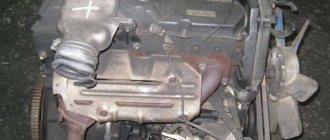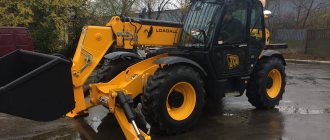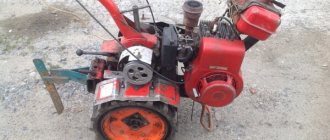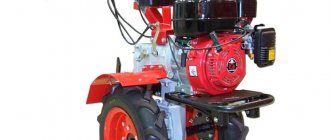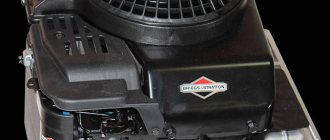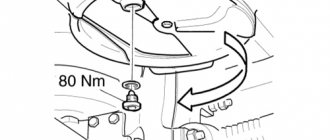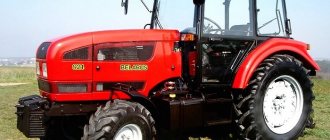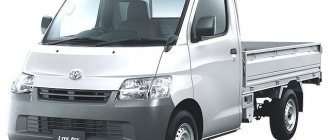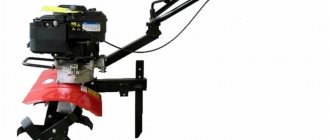Toyota Lite Ace is a minivan and an analogue of the Toyota Town Ace truck. This model has been produced by the large Japanese corporation Toyota since 1970.
The first cars produced before 1986 had only rear-wheel drive. Later, the manufacturer introduced an all-wheel drive system, implemented by forced connection of the front wheel axle.
In 1985, the third generation became available on the market. The car turned out to be quite successful, since already in the first months the demand for it began to grow very quickly.
Several power plant options were proposed for the car, namely 4K-J and 5K. These engines are gasoline. The 4K-J brand unit, with a working volume of 1.3 liters, developed a maximum power of 58 horsepower. The 5K engine, referred to in some modifications as 5K-J, had a displacement of 1.5 liters, and the maximum output power was 70 horsepower, which was quite good for those years. But in addition to gasoline variations, there were also diesel versions, equipped with a two-liter 2C power plant. The maximum output power of this unit reaches 73 horsepower.
All presented engines were installed on this car throughout the entire mass production of the third generation. In certain periods (until 1988), the manufacturer equipped some modifications of the minivan with other engines, including 5K-U, 2Y-U and 2C-T. The 5K-U power unit had a displacement of 1.5 liters and a maximum output power of 70 horsepower. The 2Y-U engine, with its displacement of 1.8 liters, was capable of developing a maximum power of 79 horsepower. As for diesel options, this niche is occupied by the 2C-T engine, which has a displacement of 2.0 liters and a maximum output power of 82 horsepower.
In 1988, the Toyota Lite Ace was slightly restyled. Among the main changes, the presence of updated optics should be highlighted. Otherwise, the new model is not much different from its predecessors. The range of power plants remains the same and includes all the same engines.
In 1991, the manufacturer introduced consumers to the fourth generation of this car. The design of the new generation became more rounded and generally corresponded in style to the Japanese automotive fashion of that time. The headlights of the car have become more massive, and they also received a slightly modified shape.
The range of engines offered has also been updated. Now it includes three new power units, namely the petrol 3Y-EU and diesel 2C-T and 3C-T. The first version had a displacement of 2.0 liters, and the maximum power reached 97 horsepower. The 2C-T engine with a displacement of 2.0 liters developed a maximum power of 85 horsepower. The last option, called 3C-T, had the same displacement of two liters, but its power, depending on the configuration of the car itself, varied from 88 to 92 horsepower.
In 1996, the fifth generation debuted. The new generation has received a more modern appearance and a redesigned interior.
As a power plant, several different options are offered, some of which were inherited from its predecessors (petrol 5K and diesel 2C). The line of new engines is represented by a 3C-E diesel engine and 7K and 7K-E gasoline engines. The diesel engine has a displacement of 2.2 liters and a maximum output power of 79 horsepower. The first petrol version has a maximum power of 76 horsepower with a displacement of 1.8 liters. The volume of the second gasoline engine remained the same, but its power was increased to 82 horsepower. In 2007, this generation was discontinued from mass production.
In 2008, the manufacturer presented the current sixth generation, which is currently in mass production. The design of the new car was carried out by Toyota together with Daihatsu, and mass production of the car is carried out by Daihatsu.
For the sixth generation Toyota Lite Ace, only one engine was offered, which is the 3SZ-VE gasoline power unit. This unit has a displacement of 1.5 liters, but the maximum output power reaches 97 horsepower, which is quite good for such a volume.
On-site inspection
The hood and windshield form an almost straight line, which has a beneficial effect on aerodynamics. Small headlights are supported from below by a powerful bumper of an original shape. Large foglights are built into it at the edges; they are covered with decorative protective grilles and surrounded by plastic glasses that cover the edges of the bumper and bump stop.
In case of minor “clashes”, for example, when parking, the plastic will take the blow, preserving the bumper itself, painted in a beautiful silver metallic.
The rear door lifts up and is held open by gas shock absorbers. It has a very large handle for easy opening.
There is only one sliding door to access the passenger compartment - on the left side.
The salon is very colorful. Velor is quite a cheerful color. Instrument scales are blue. The color of other parts of the interior is light gray. An unusual combination of colors, however, quite harmonious. On the driver's door trim, my attention is drawn to a black spot that houses three power window control buttons.
Yes, there is one feature here that is not typical of the vast majority of other cars: the glass of the side sliding door is lowered using an electric drive.
The cabin is very spacious. Thanks to the carriage layout, eight people can fit here (including luggage) comfortably. By the way, the seats fold easily, forming a flat platform on which you can sit for the night. Well, here’s a bonus: all seats are adjustable and have headrests. This will help you get comfortable on a long journey.
Another nice touch: the rear row seats (there are two of them, but they can accommodate three) can move back and forth relative to each other, which allows you to more widely vary the volume of the luggage compartment. And middle row passengers have access to climate control in the cabin.
The driver's seat is well equipped. Ergonomics are good, the seat is comfortable, and the driving position is close to optimal. There are no problems with visibility thanks to the very large exterior mirrors, large glass area and high seating position.
The instrument panel is more typical of a passenger car than a bus. Sitting behind the wheel, you don’t feel like you’re in a minivan at all. The instrument panel is quite informative: speedometer, tachometer, fuel level and coolant temperature gauges. The instrument scales are decorated with a blue stripe with orange divisions. The readability of instruments is excellent.
There is nothing superfluous on the center console: climate control, a CD receiver, a pocket for coins and the inevitable ashtray with a cigarette lighter.
The space between the driver and front passenger seats is free, since the automatic transmission lever is located on the steering column.
Let's go
Diesel can't be fast. This would seem to be the general rule. But the Japanese rarely play by the rules. As, for example, in this case. Knowing that under the hood there is a 2.2 liter turbodiesel with a capacity of 91 “horses”, I did not expect decent dynamics. And, as it turned out, in vain. In response to pressing the gas pedal, Noah sat down slightly on the rear wheels and quickly rushed forward. At the same time, the characteristic diesel rattling was not observed at all.
The car picks up speed very well from a standstill. Gear shifts smoothly, almost imperceptibly. The engine is torquey at low speeds, and at about 2,200 rpm there is a sense of pickup, and acceleration by minivan standards becomes downright fun.
Driving on the highway is pure pleasure. Noah handles the road well. It also fits well into gentle turns. All-wheel drive holds the car confidently. However, I do not dare to take provocative actions. The high center of gravity quickly cools the ardor - the body rolls noticeably when cornering.
The soft suspension is conducive to high-speed driving in a straight line. The car rocks gently on a long-travel suspension. The ride comfort exceeded all my expectations.
Noah does not notice minor coating defects. Even at high speeds (about 150 km/h), the cabin is quiet: the engine is barely audible, and aerodynamic noise begins to annoy only at speeds close to maximum.
The steering performed very well. Despite the presence of a very powerful hydraulic booster, feedback at high speed is felt excellent. And there is no trace of the “thoughtfulness” inherent in some cars. This is largely due to the short wheelbase, which makes the car more maneuverable and sensitive to steering inputs.
I did not fail to check the off-road properties of the car. Of course, Noah is far from a full-fledged SUV. A slightly increased ground clearance will never replace a multiplier and at least one hard lock, even an interaxle one. Alas, Noah has neither downshifts nor locking.
Therefore, its destiny is light soil after rain and small slopes. In such conditions, the car behaves with dignity, and the rear suspension has large compression and rebound strokes.
Chassis
A modern car has an independent front suspension, which includes springs and bidirectional hydraulic telescopic shock absorbers. The rear suspension has a dependent design and longitudinal semi-elliptic springs, complemented by hydraulic shock absorbers.
dimensions
Models produced since 1985:
- Total length – 3995 mm;
- Full width – 1650 mm;
- Total height -1755 mm.
Models produced since 1992:
- Total length – 4360 mm;
- Full width – 1685 mm;
- Total height – 1775 mm;
- Total height -1840 mm.
Models produced since 1992:
- Total length – 4435 mm;
- Full width – 1695 mm;
- Total height -1870 mm.
Models produced since 2008:
- Total length – 4045 mm;
- Full width – 1665 mm;
- Total height -1900 mm.
Comparing with "classmates"
This market segment is gradually becoming saturated. This is understandable - a universal mode of transport cannot remain unclaimed. But the Toyota Noah ($8,500)* still has few full-fledged “classmates”. On our streets you can only find Mazda Bongo Friende ($9,000) and Nissan Largo ($6,160). Close in spirit to our guest today is the Mazda MPV (no data).
* The average offer price is indicated according to the block of free private advertisements of the newspaper “Wheels” at the time of publication of the article
Evgeniy KARIMOV. Photo by Konstantin BATSAZOV
up
Make yourself comfortable!
So, sofa number one. It consists of two parts: one wide for three people, the second narrow for one. Each of the parts is mounted on separate slides, so they can be moved back and forth independently of each other. You can also independently adjust the angles of the backrests. The side single section folds down to provide access to sofa number two.
It can also accommodate three adults and consists of two identical parts. Each of them can also be moved back and forth and the back angle can be adjusted separately. In addition, the rear sofa can be folded in such a way that both halves stand at attention along the walls, and we get a huge cargo space, but with five passenger seats.
However, even with the rear sofa unfolded, we had enough space for all the necessary luggage: bags of food, a barbecue, a pot of marinated meat, a box of saxaul; there was also room for a tent. But a set of six folding chairs-chaise lounges and the same folding I had to leave the table at home. Not the boyars, tea, let's sit on the grass in nature.
Ship's equanimity
The pleasant hassle of getting ready is over, the tank is filled to capacity with diesel fuel, and we are already on our way. The first thing that struck me was the ship's composure of the Lite Ace Noah when driving on the highway. It feels like under the flat “deck” floor of the cabin there is not a car suspension, but an air cushion that almost completely smoothes out the asphalt waves.
At low speeds when driving on city streets, this effect is not as noticeable as on a country highway, when the speedometer needle approaches 150 km/h. And this is the case with a rather large minivan, almost a bus, with a 2.2-liter turbodiesel!
We had not driven even ten kilometers from the city when the distinct popping sounds of opening beer cans were heard behind me. These friends began the process of relaxing on the road. So my neighbor - the front passenger - decided to join their cheerful company and deftly slipped back between the seats. The floor between them is flat (the gearshift lever is located on the steering column) - I don’t want to walk around the cabin.
Interior decoration of the S 4WD G Section
Regarding the control panel, we can say that it has remained virtually unchanged. It looks the same as previous Noah models. The only difference that exists is the location of the handles for controlling the air conditioner.
In advertisements for this car there is often a phrase saying that the car’s seats are quite bulky. Indeed, the chairs are voluminous, but they lack comfort. Due to the size of the cabin, there is still a constant feeling of “tightness”, and the desire to change seats does not go away. The third row seats are difficult to get into and even more difficult to get out of. From the outside, Noah is not as small as it initially seems, but there is not enough space in the “block”.
Journey through the cabin
I pretend that I don’t care about the seductive smell of beer or the “betrayal” of the front passenger. I focus on driving and studying the interior in detail. I feel like the captain of a small but richly equipped yacht. My “captain's bridge” is located high up, everything is clearly visible from it. Full speed ahead!
The gray plastic trim is successfully complemented by colorful soft fabric - it not only covers all the seats, but also decorates the door panels. By the way, electric windows are available not only on the front hinged doors, but also on the rear sliding doors. The instrument panel is uncomplicated, all its symbols are clear, and the dials please the eye not only with clear graduations, but also with a pleasant blue color.
On the left of the steering column sticks out a gearshift lever of a very intricate shape. On the center console there is a “weather in the house” control unit, an audio system and a convenient container for various small things. This is where I’ll probably end my journey through the Lite Ace Noah salon. After all, a beautiful landscape opens up outside the windows, it’s time to look for a place for a picnic.
With a slight movement of my hand I direct our tourist “liner” away from the asphalt. The group in the salon perked up and began making tricky remarks, saying, be careful on the bumps, don’t spill our beer.
But Noah overcomes several small bumps effortlessly, only slightly swaying his body. There is a larger bump ahead - I move the gear selector lever to the “L” position, add gas, and the car confidently moves forward, making its way between the trees to a sunlit clearing.
The journey is over, spread the blanket, take out the food, the picnic begins...
Konstantin BATSAZOV. Photo by the author
up
S 4WD G Section – the machine in action
It has already been noted that the car unit is designed for 2 liters and has 4 cylinders. In addition, it has a direct injection system and variable valve timing. The acceleration speed of the car is so high that literally when starting to move, the crankshaft rotation speed reaches 2500 rpm. Such power will be enough to safely drive around city streets. The engine is equipped with a 4-speed automatic transmission.
It is necessary to note the high level of stability of the Toyota Noah car and vehicle control. Innovations have not affected the steering system; it has remained virtually unchanged.
The model was equipped with one of two engines: a 2-liter gasoline engine and a 2.2-liter turbodiesel
[img10] Toyota Lite Ace Noah is a passenger version of the increased comfort of the Japanese minibus Toyota Lite Ace.
Production of Noah began in late 1996. The model was equipped with one of two engines: a 2-liter gasoline engine and a 2.2-liter turbodiesel. Gearboxes were both mechanical and automatic. The model had rear wheel drive. Quite a few modifications were produced with permanent all-wheel drive.
In the fall of 1998, a serious modernization of the “family” took place, which affected both the exterior and the interior. The optics have changed, the instrument panel has changed. The range of power units and transmission have not changed. At the end of 2001, a generation change occurred. The new Noah is front-wheel drive.
Evgeniy KARIMOV
up
Characteristics of the Town Ace Noah car
Before we say anything about the Ace Noah car, it is necessary to remind you that it is Japanese. Until the end of the 20th century, cars produced in the Land of the Rising Sun were considered one of the worst. At the moment the situation has changed radically. Toyota Ice Noah, whose reviews exceeded all expectations, has a 22-liter tank. The unit is powerful, and the dimensions of the car are compact. Great for driving in the city and on highways; Fuel consumption is acceptable: in a populated area - 12 liters, on the highway - 10 liters. The only downside is the relatively low speed.
